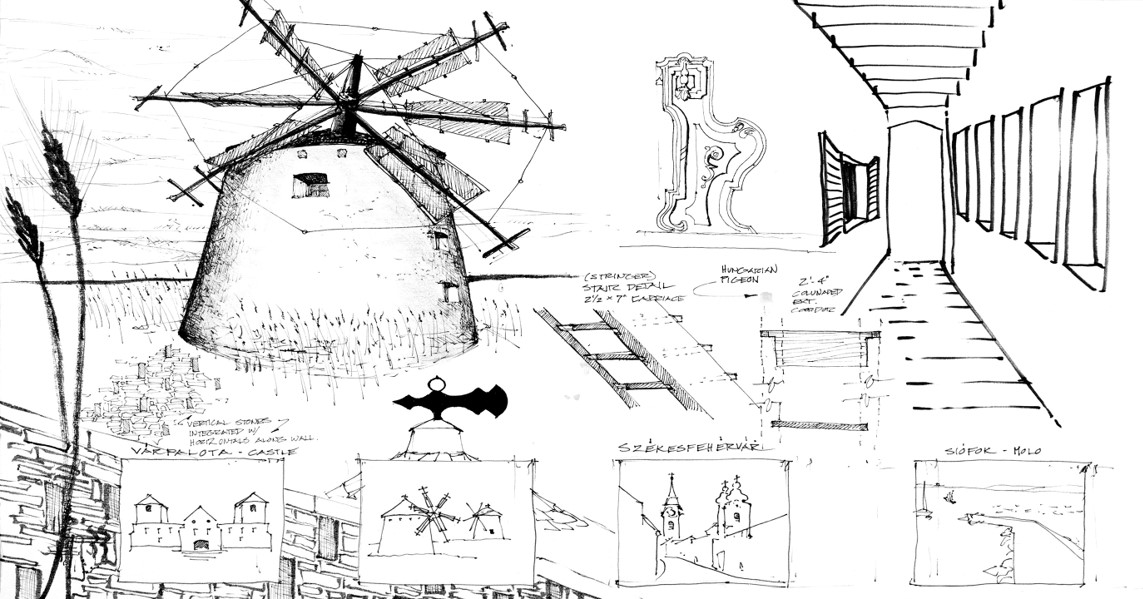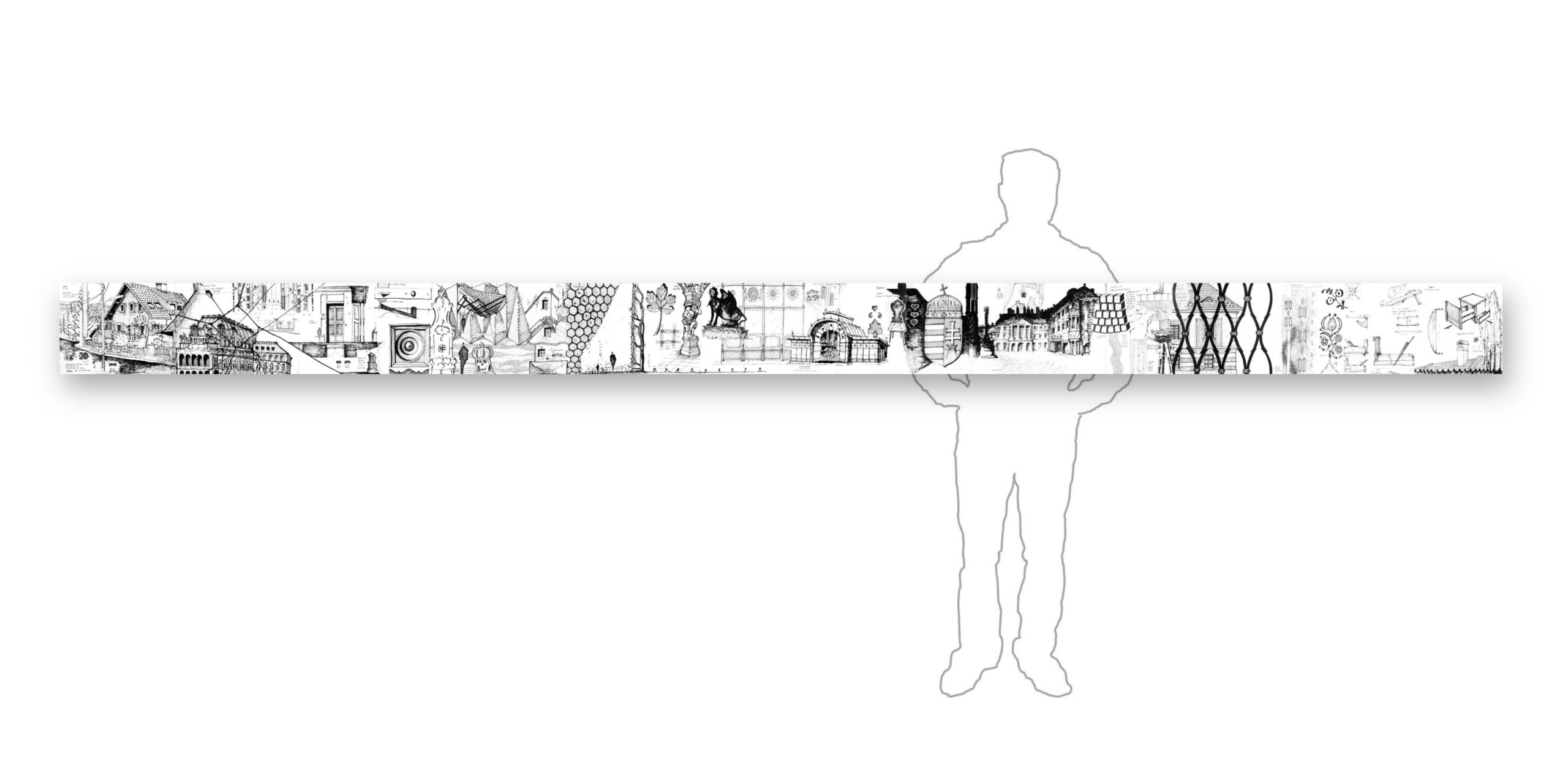6.20.Hungary-3-detail-b Highlights Relevant to Sustainable Design:
We can rethink wind power.
Across my travels, all summer long I would see windmills sitting comfortably on the hills. My father and I enjoyed seeing this particular windmill as we ate our picnic lunch. Since there were few restaurants on the road between villages, he would buy fresh bread in the morning along with fruit and vegetables. We carried leftover salami that was salted to the point where it didn’t need refrigeration. A summer picnic came to be quite the normal lunchtime activity for us. Using wind power to make electricity is a lot harder than using it to grind grain. I saw that the Amish back in Pennsylvania use wind power to pump water, which is also easier than making electricity. The efficiency of generating electricity from the wind is improving, but the return on investment (ROI) without subsidies is still not high enough in many markets to attract buyers. Vertical axis wind turbines for commercial and residential applications may offer a more cost- effective micro-power production option than the macro-power of the huge offshore windmills in areas like the like the North Sea that help power Denmark.
Author and illustrator: Charlie Szoradi is an architect, inventor, and the CEO of Independence LED Lighting. He writes about many other topics related to windmills and micro-power through his extensive travels around the world.
If you have found this posting online, it is an excerpt from Mr. Szoradi’s book Learn from Looking that served as the inspiring seed content for this drawing share resource. For additional drawings and insights on localized power generation and windmills, we hope that you enjoy exploring LearnfromLooking.com. You can search via general terms such as sustainability as well as narrower terms such as land based windmills, offshore windmills, and sub-sets like vertical axis wind turbines.



